
“Mango is not a familiar fruit for most of us, but lately it has been appearing more and more often in shoppers’ grocery baskets. And this is very good: after all, the product has not only a sweet taste, but also a lot of useful properties. Let’s find out how much per day it can be eaten.
What is the peculiarity of the mango?
This fruit is characterized by the fact that not only the pulp itself, but also other parts of the fruit have useful properties. It is believed that mango is a functional product due to its unique biologically active substances, primarily mangiferin (one of the most effective natural antioxidants).
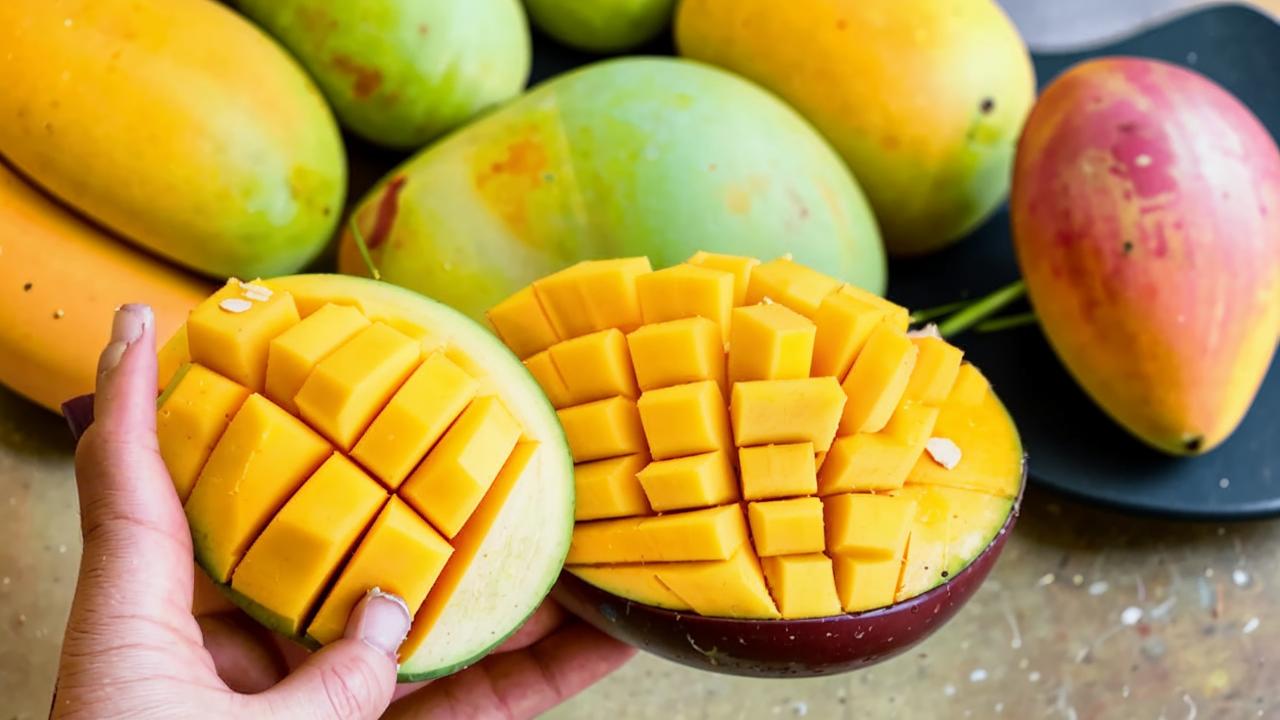
But the supplements produced from its leaves, which can have antioxidant effects, are also characterized by their beneficial properties, while mango peel and kernels retain a high concentration of bioactive molecules.
Mango is also known as:
- common mango;
- mangifera indica.
The caloric value of mango per 100 g is 60 kcal. The amount of proteins and fats in it is quite low, as in all fruits, and the content of carbohydrates is 13 g.
How useful is mango?
1. The presence of fiber. This is a feature of all products of plant origin, and mango is no exception. It is fiber that contributes to the feeling of satiety, improving the gastrointestinal tract (GI tract) and reducing the risk of many chronic diseases. The amount of dietary fiber depends on the variety of food: some are more fleshy and contain more fiber, while others have a creamier consistency.
2. Mango consumption can improve blood pressure, carbohydrate metabolism and gut microbial diversity. It’s all about the content of fiber, vitamin C, potassium, beta-carotene and other phytochemicals such as mangiferin and phenolic acids. These substances modulate the metabolism of fats, glucose and favorably affect the microbial state of the gut.
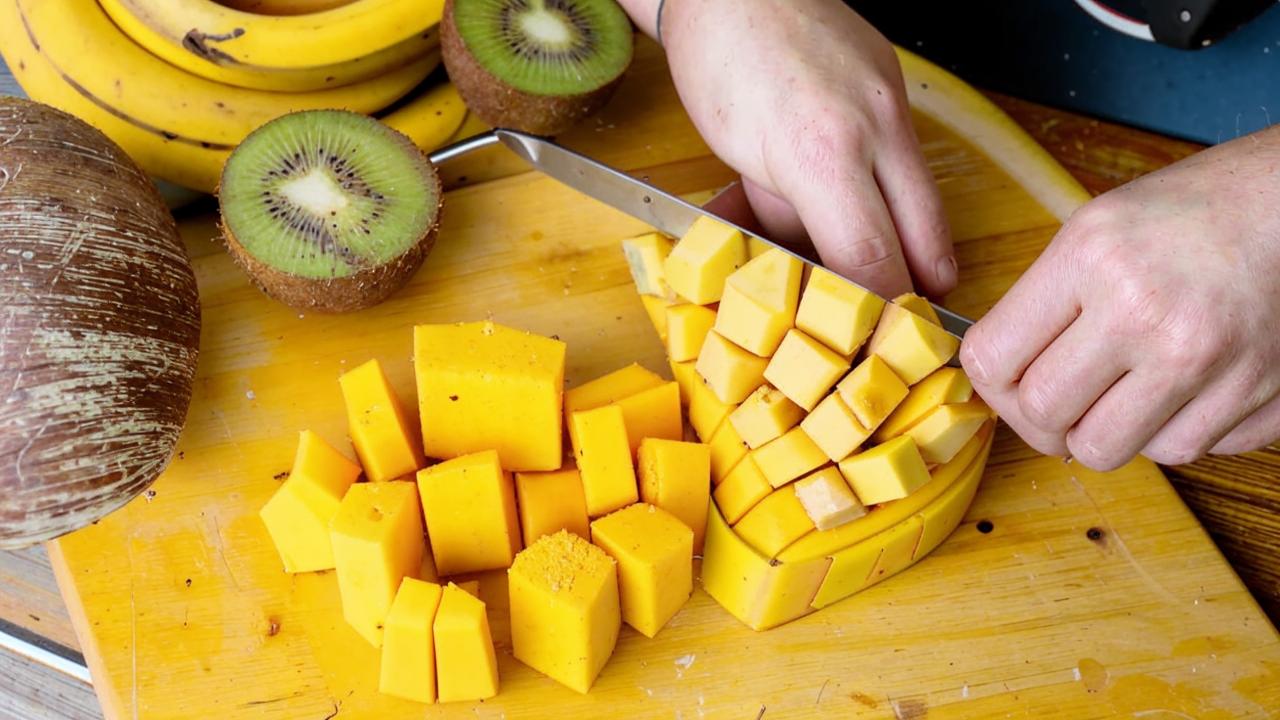
3. Consumption of mangoes increases satiety and mitigates the rise in blood glucose levels after a meal. This effect applies only to fresh fruit: after eating it, a feeling of satiety is noted, which leads to a lower calorie intake.
4. Reduces blood glucose levels. This may be surprising, because mango is a source of carbohydrates, but this effect is really noted. The fact is that the phytochemicals contained in mangoes, mentioned above, can also help in slowing down the absorption of carbohydrates in the intestines.
Should I use mango-based supplements?
Now on sale you can find not only the fruit itself in fresh or dried form, but also supplements based on it. The most common is the African mango supplement, which is derived from the seeds of the fruit.
African mango, also known as bush mango, is the edible fruit of the Irvingia gabonensis tree native to tropical Africa. Its fruit is sweet and juicy and is a source of vitamin C.
African mango seeds, sometimes called “dika nuts”, are rich in fatty acids and other nutrients such as iron, polyphenols.
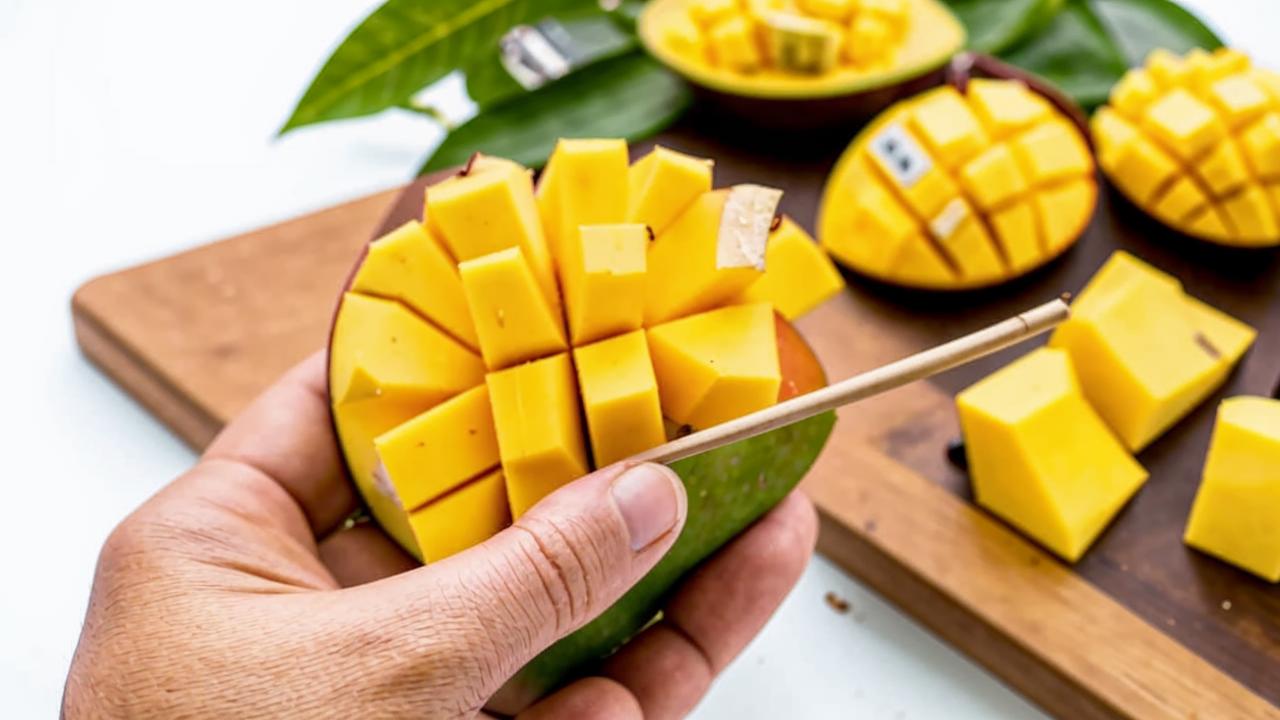
The seeds can be eaten raw or roasted, but they are also used to make oil, chewing gum, and thickeners used in cooking. The seeds and their extracts are sold as food supplements under the name “African Mango”. But they have nothing to do with the mango fruit sold in grocery stores, which is usually sourced from India or Southeast Asia.
The popularity of this supplement is due to the fact that there is a perception of its ability to affect weight loss, improve overall cholesterol and blood glucose levels. Many reviews show that African mango supplements can cause the above positive effects, but it is still quite difficult to say for sure that they will benefit humans.
Therefore, the process of researching these supplements is still ongoing. Moreover, such products have their own list of side effects. For example, complaints of headaches, sleep and digestive problems are noted.
That is why choosing any supplements as a weight loss tool is not a good idea. The best way to achieve this goal is to correct the diet, physical activity and adherence to the regimen. These methods not only do not pose no health risks, but also ensure that the result is maintained.
How many mangoes can be eaten per day?
According to nutritional recommendations, an adult should eat from five servings of fruits and vegetables every day. The size of each serving is up to 150 grams. Therefore, mangoes can be included in your diet, observing this norm.
And it is important to remember that each fruit has its own beneficial properties. Therefore, with all the advantages of mango should not make it the only fruit in your diet, it will reduce the nutritional value of the diet.
Recipes with mango
If you want to try this fruit not only in fresh form, but also as an ingredient, choose any of these recipes.
Mango and banana smoothie
Ingredientes:
- mango – 2 pcs;
- banana – 1 pc;
- milk – 1/2 tbsp;
- yogurt – 1.2 tbsp;
- ice – 3-5 cubes.
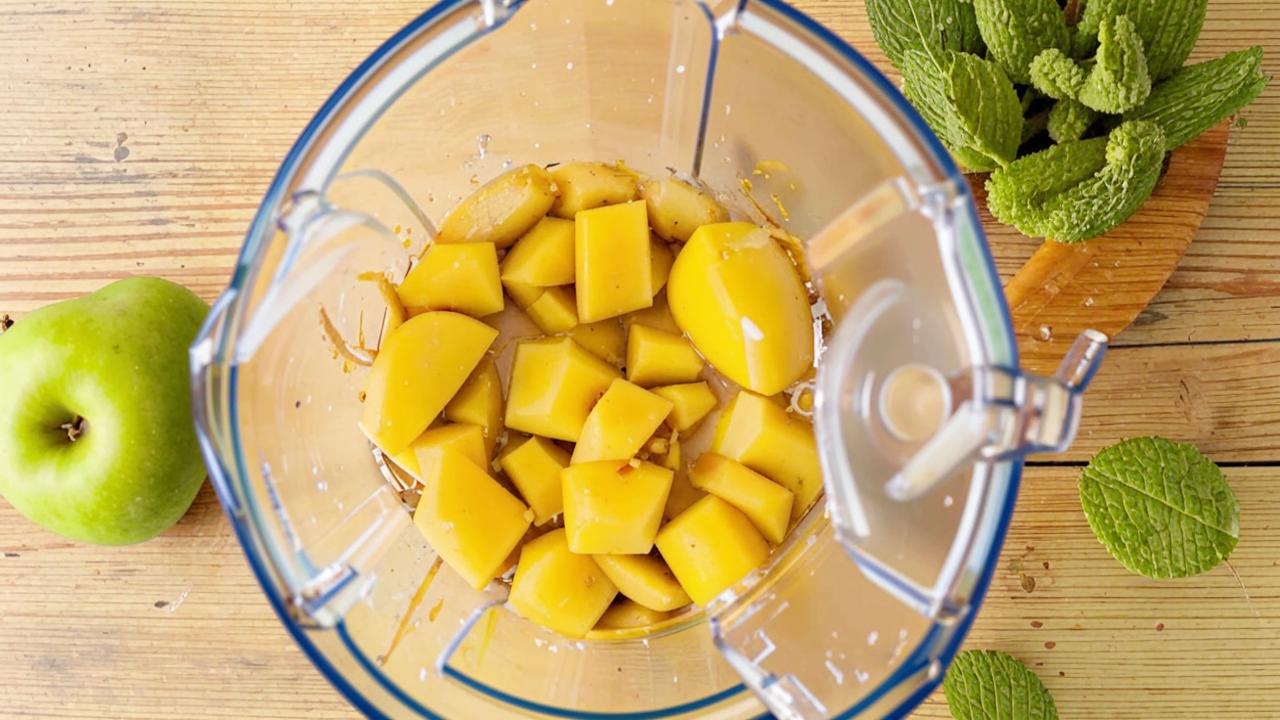
Preparação:
- Peel banana, cut into random pieces.
- Add banana and mango to the blender bowl.
- Pour in milk and yogurt.
- Grind until smooth.
- Chop the ice with an ice pick.
- Put the ice in a glass, pour the smoothie.
Mango tea
Ingredientes:
- mango – 1/2 pc;
- black tea – 1 tsp;
- lemon – 1/2 pc;
- blueberries – 1 handful;
- sea buckthorn – 1 handful;
- rosemary – 2 sprigs;
- water – 600 ml.
Preparação:
- Cut the mango flesh separated from the peel into small cubes and divide into two equal portions.
- Bring water to a boil.
- Scald the inside of the teapot with boiling water to warm it up.
- Pour the tea into a small teapot, put one of the two portions of mango, sea buckthorn, blueberries, sprigs of rosemary and sliced lemon.
- Mashed potato the other mango with a wooden mallet until puréed.
- Put the puree into the kettle with the rest of the ingredients and pour hot water over it.
- Stir, cover the kettle with a lid, cover with a towel and let the drink infuse for five to seven minutes.

Salad with mango and shrimp
Ingredientes:
- medium ripe mango – 1/2 pc;
- shrimps – 10 pcs;
- lettuce – 2 handfuls;
- sesame seeds – 1 pinch.
Dressing:
- sesame oil – 1 tbsp;
- lemon juice – 1 tbsp;
- honey – 1 tsp;
- mustard with mustard seeds – 1 tbsp;
- salt – to taste.
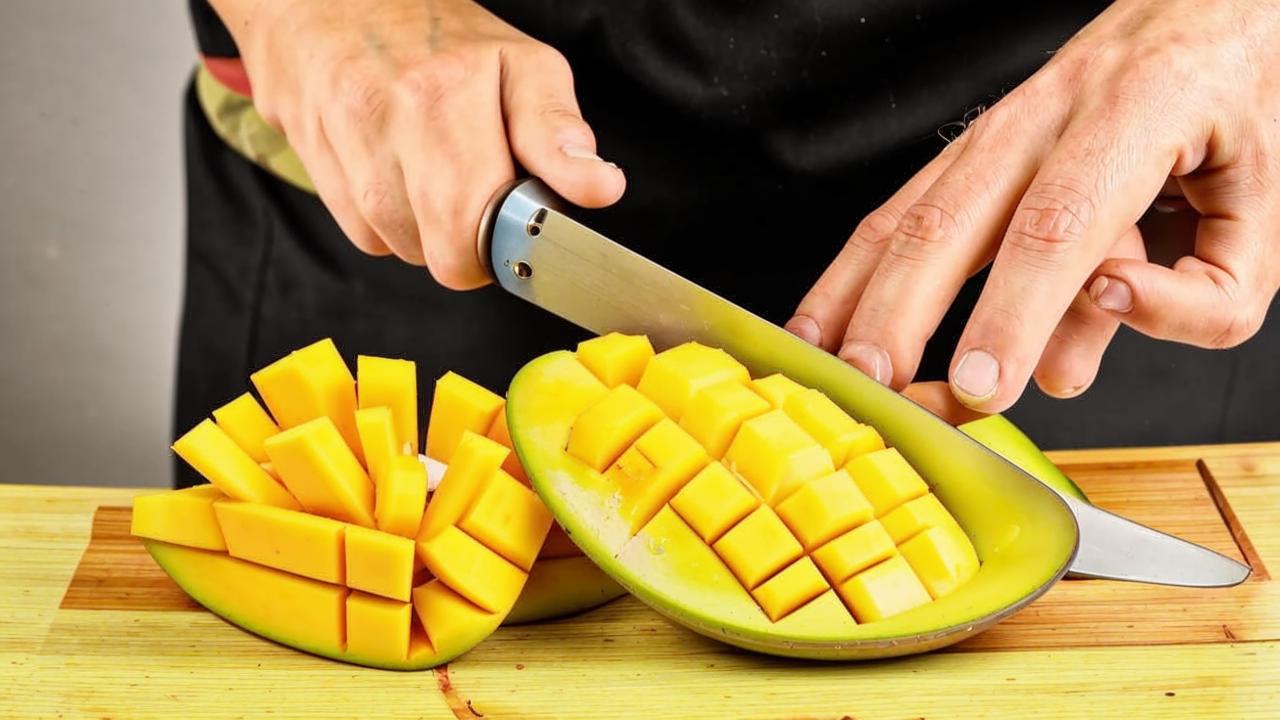
Preparação:
- Boil and peel the shrimp.
- For dressing mix lemon juice, honey, mustard and sesame oil.
- Peel the mango and cut into thin strips.
- Wash the salad leaves and cut into strips.
- Place the salad on a plate, pour the dressing over it.
- Arrange the mangoes on top.
- Mix the salad leaves with the mango, salt to taste.
- Arrange shrimp on top, pour dressing over and sprinkle with sesame seeds.





